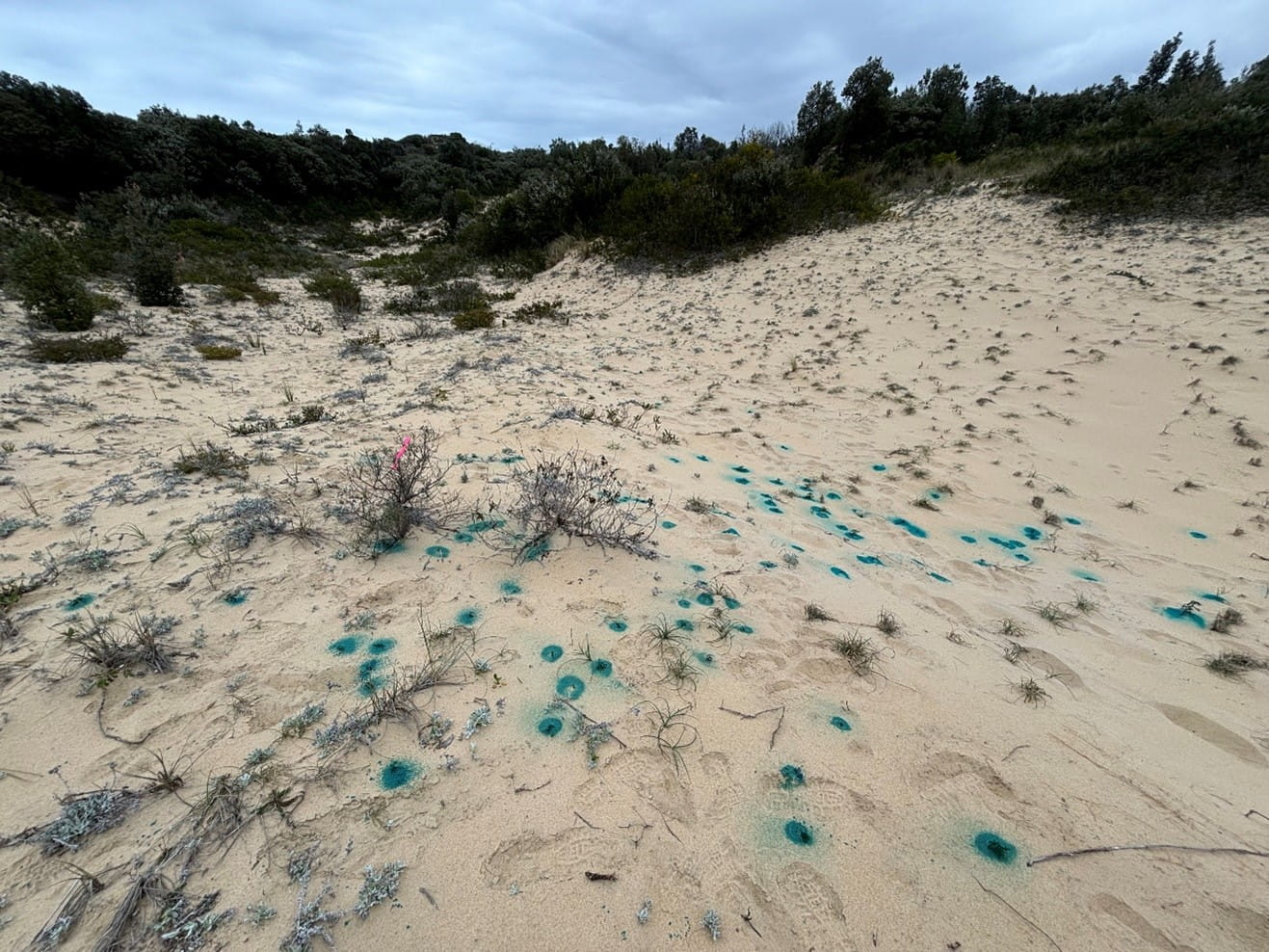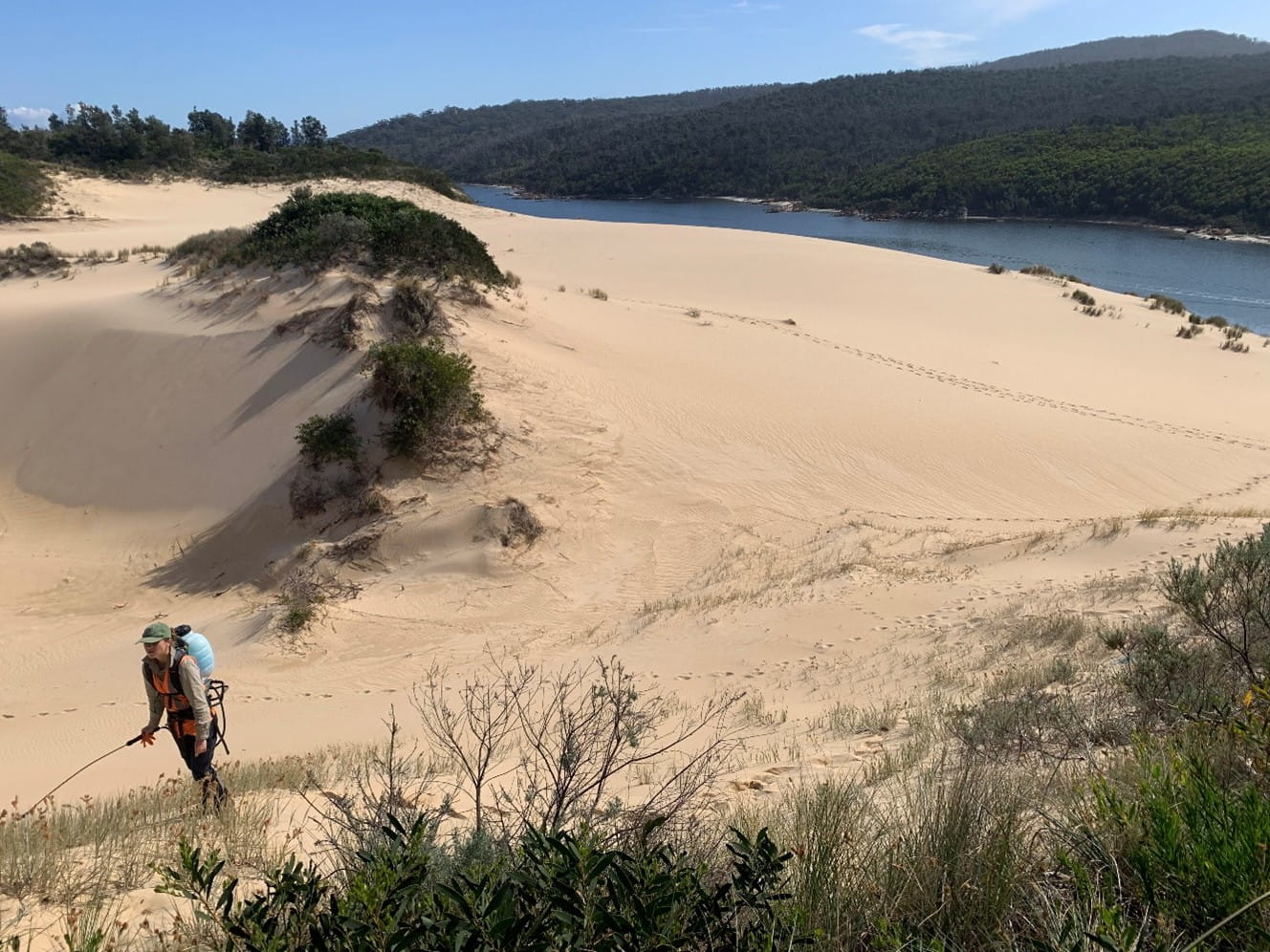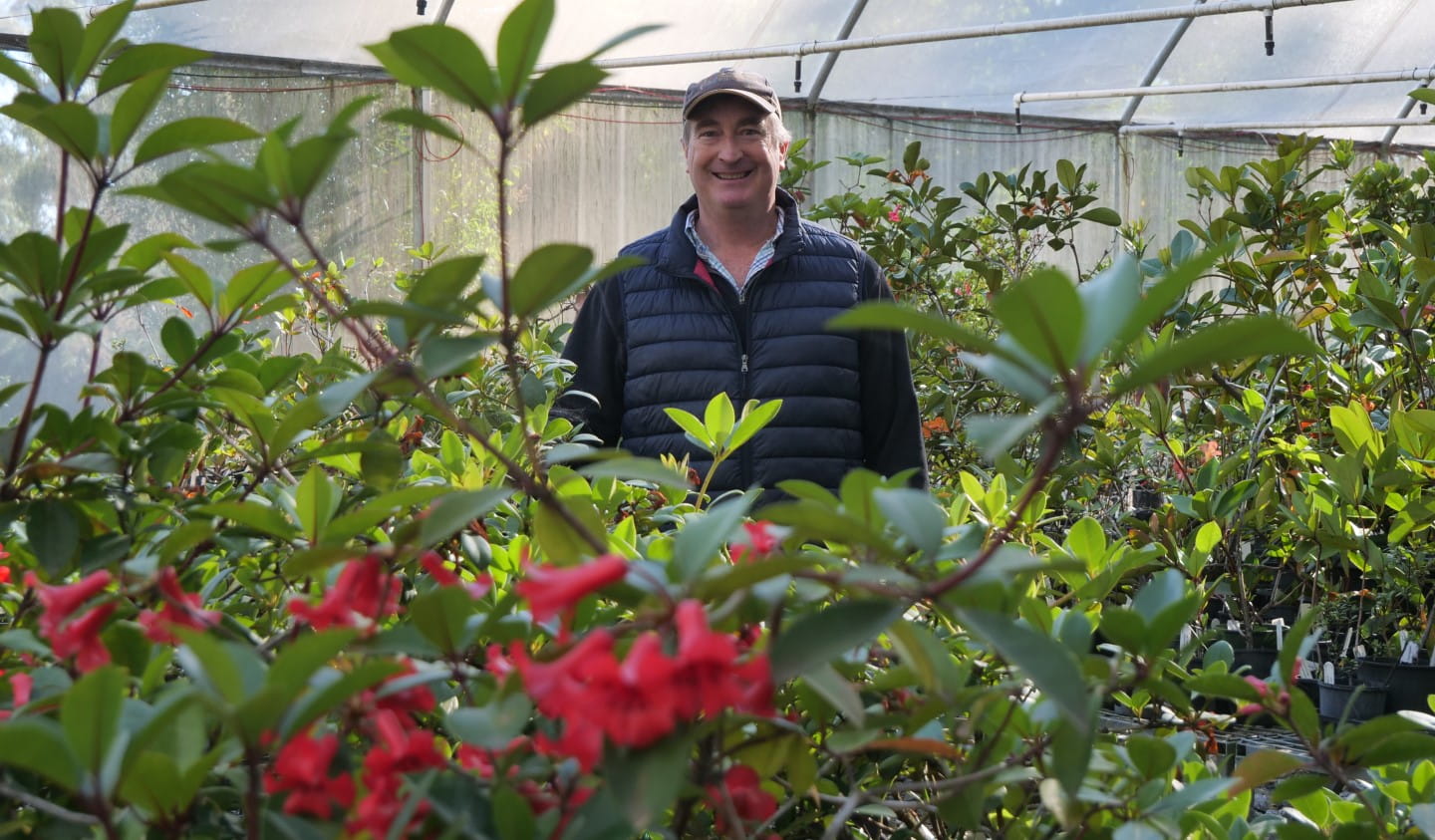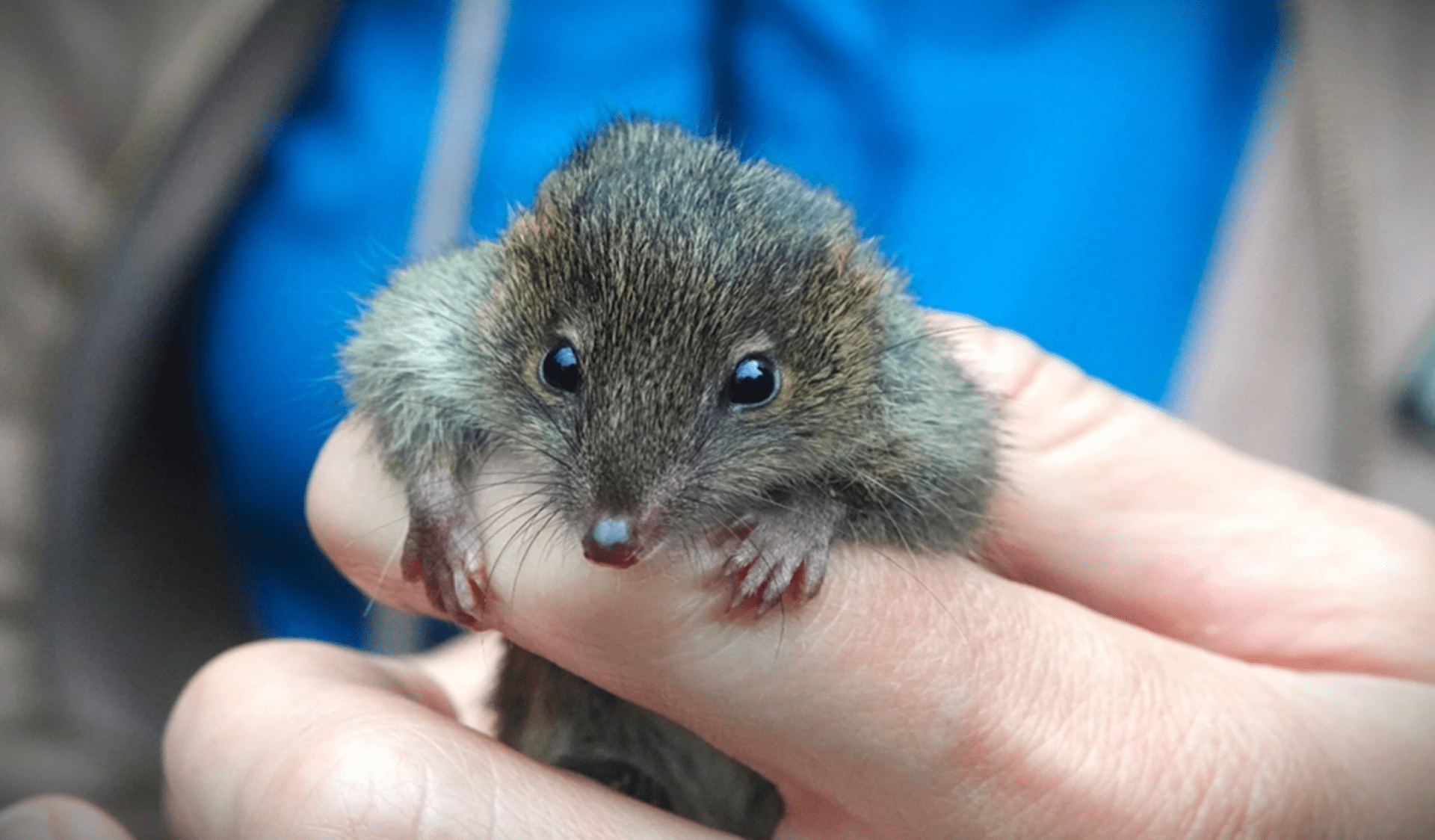Treating invasive species at Tamboon Inlet
Wednesday 25 June, 2025
Along the far east coast of Victoria tower some of the most spectacular dune systems. These dynamic environments provide natural protection and support for the native vegetation and wildlife that inhabit coastal areas.
Waves, tides, wind and sand movement all influence the transformation of dunes, however the presence of invasive species can also unnaturally alter these sensitive coastal structures.
Funded by the Department of Energy, Environment and Climate Action, Parks Victoria has been delivering a series of Protecting Biodiversity projects which aim to reduce the impact of both pest-plants and feral animals along the East Gippsland coast.
“Weeds and pest animals are one of the greatest threats to the survival of our native plants and animals in Victoria,” says Dave Burton, Area Chief Ranger for Snowy Croajingolong.
“To conserve our special Victorian places and iconic animals, we need to take action to control and limit the spread of invasive species.”
Stretching 88,355 hectares Croajingolong National Park has some of the highest conservation values in the state.
Parks Victoria has recently engaged contractors to deliver weed control within the park – focussing on:
- Tree Lupin (Lupinus arboreus)
- Bluebell Creeper (Billardiera heterophylla)
- Dolichos Pea (Dipogon ligonsus)
- Sea Spurge (Euphorbia paralias)
Due to the consistency of recurring treatment, the density of these target species has considerably reduced – particularly for Tree Lupin (Lupinus arboreus).

Treated Tree Lupin seedlings on the sand plain

Actively treating Tree Lupin seedlings at Tamboon Inlet
Tree Lupin is regarded as an environmental weed in Victoria and poses a significant threat to coastal dune ecosystems, heathlands and healthy woodlands. This shrub grows at a rapid rate and produces long-lived seeds that are explosively dispersed into the environment. Lupins have been used in other countries – such as New Zealand – to help with erosion control and sand/soil stabilsation. We can assume that when this invasive species was introduced to Australia in the mid-nineteenth century, however, the long term and future impacts on the environment were not considered.
Tree Lupin fixes the soil’s nitrogen, altering the chemistry and resulting in ground becomes less suitable for the survival of native vegetation. This also provides an opportunity for other exotic (non-native) species to establish, forming competition with native plant communities – while also altering the dune ecosystem by forming dense thickets, decreasing the mobility of the sand.
This is just one of the targeted pest-plant species that Parks Victoria, with the help of contractors, community groups and partner agencies, is working to control to protect the natural values and biodiversity of Far East Gippsland.
“Our latest efforts to control invasive Tree Lupin and other weeds at Tamboon Inlet, Croajinglong National Park have produced effective results, and we will continue to monitor and treat their spread,” Dave said.
“As a collective, it’s important that we continue to assist the natural environment through providing protection from invasive plant species – enabling our native wildlife and important ecosystems to thrive.”




